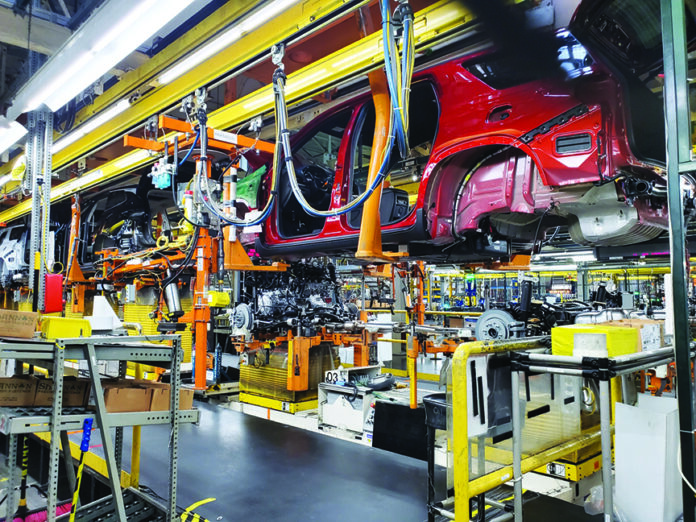Do you want to start a successful IC company? Then follow these three steps.
- Start with a portfolio of products. These need not be identical but instead might comprise a menu of components that can be configured in different ways.
- There must be sufficient demand for these products before manufacturing begins. The factory needs to be designed around the product, but should also be nimble enough to adapt when demand changes.
- A good team is crucial to success with an IC company. Even if team members aren’t under the same corporate umbrella, each one should have a stake in the venture’s long-term success.
Founding and developing any construction venture is a complicated, multi-step process, but it’s especially so with an industrialized construction (IC) company, which could be defined as a vertically integrated, true manufacturing operation using modern methods of mass production. However, Colby Swanson — Executive in Residence at the advisory firm ADL Ventures (with six US locations) — says that, when looking at the big picture, the process can be broken down into three main stages.
One point he’s adamant about, a point that may surprise some builders, is that moving construction offsite to an indoor facility is not the best first step. “The dirty secret in the offsite construction industry is that we’re stick-building under a roof and calling it industrialization. And that’s not really what it’s about,” Swanson says. “Industrialization involves a different discipline: Manufacturing.”
In this article, we’ll describe the three steps Swanson recommends for setting up an IC company. Then we’ll look at the factors he thinks are holding offsite construction back, and the ways some companies have tried to overcome them. Finally, we’ll turn to his recommendations for what you can do if you’re already an offsite manufacturer constructing buildings in a factory and want to industrialize your business.
Step 1: Productization
The first step is productization. Although this could mean planning to repeatedly manufacture the exact same product every single time, it doesn’t have to mean that.
Productization can instead mean having a portfolio of products rather than repeatedly working on bespoke projects. Swanson says, “We’re talking about engineering a kit of parts — components that can be configured in a variety of different ways” to construct different types of buildings.
Designing a product for manufacturing and assembly (DfMA) means getting input on an initial design from people at all stages of creating a building. Architects and engineers should obviously have input, but so should manufacturing experts, general contractors, transportation and craning partners, developers, tradespeople and the building end-users (homeowners, apartment residents, hotel guests, patients, etc.)
The design process should “iterate on a virtual model (aka a digital twin) that can be quickly and cheaply updated,” Swanson says. “More sophisticated modeling software, can also digitally ‘run the parts’ through a digital twin of the manufacturing process and field assembly to work out as many issues as possible before physical prototyping.”
Swanson says that physical prototypes can be useful at the end of the virtual process, often in scaled-down sizes.
Step 2: Aggregate Demand
After designing your kit of parts, it’s time to “aggregate demand,” as Swanson puts it. This means making sure you have enough customer demand — whether it’s for single-family homes, multifamily, hospitals, or hospitality — to ensure that your factory will keep running at a high enough level.
“If you’re going to spend millions, or tens of millions, or in some cases, hundreds of millions of dollars on a factory, you better have your demand lined up to fill your pipeline,” Swanson says.
He also recommends building flexibility into your business. “If you design a product that’s inflexible — that is, it can only do one thing, even if it does that one thing really well — then when the market shifts, you may have a problem.”
One example is a single-family product that’s suddenly not needed. “That’s going to hurt if you’ve got a $50 million cap-ex factory sitting there, not able to produce anything the market wants,” he says. In this case, you would ideally want a kit of parts that can be used for both single-family and multifamily homes.
When you aggregate demand, “you might have a couple of big clients or a large group of smaller clients, whatever you need for pipeline stability. As long as they can work off the same kit of parts,” Swanson explains. “It doesn’t mean they’re all building the same thing. The finished buildings will look different for each of them. It just means they’re using the same catalog.”
Swanson maintains that it’s realistic to aggregate demand and sell products even before scaling up manufacturing beyond initial prototypes. He gives some examples: “Tesla sold a lot of CyberTrucks based on renderings, due to product uniqueness. Apple pre-sold lots of watches, due to the company’s reputation. And developers can often sell out parts or even whole high-rise apartment buildings, due to location,” Swanson says.

Photo credit: Stephen Leonardi
Step 3: Set Up a Factory
“You’ve got the product. You’ve got the demand. Now you need to design a factory that can efficiently build that product,” Swanson says. He doesn’t just mean the physical setup in the factory — which processes to automate and where to locate those in the space. He also means things like “controlling the supply chain and procurement systems, digitizing everything, using ERP [enterprise resource planning] software to manage this huge asset, and so on.”
Importantly, the factory and its manufacturing processes should have some flexibility “so that, when the inevitable product design updates happen, they can be modified,” Swanson says.
Although the design has been repeatedly adjusted in a virtual environment, it’s inevitable that the real world will necessitate more tweaks. But “the better the virtual modeling, the lower the production cost,” Swanson says. “This is how most of the manufacturing industry operates.” Whether a company is making cars, phones, computers, or toys, “they spend much more money on up-front design and engineering compared to construction.”
In fact, Swanson suggests that modular manufacturers should start thinking more like HUD-code home manufacturers — who really are in the business of manufacturing products, and also often have multiple factories.
He gives the example of Clayton Homes, a HUD-code manufacturer with 40 factories across the United States. “They have an entirely different business model from modular manufacturers. They design the product, and they own an inventory,” Swanson explains. “Then customers choose which one they want, and it’s shipped to the lot.”

Photo Credit: USDA
In contrast, single-family modular manufacturers might have a customer who wants a turret on their house followed by another customer who wants something completely different. Those are custom-built homes, not manufactured products. Custom-building isn’t scalable, which is why most modular companies have only one plant, with just a handful having two or three.
While Swanson does believe that the modular industry could evolve into a true manufacturing industry, he also believes that “there are structural problems that make that very challenging.”
Trust Issues
A major obstacle hampering the industrialization of the offsite industry is the lack of trust among the various parties involved in completing any offsite-manufactured building project. “Because nobody trusts anyone else, everybody adds a margin – what I call a ‘trust tax.’ They’re protecting themselves against some problem that they know is going to happen sooner or later,” Swanson says.
Of course, this isn’t unique to the offsite part of construction. In conventional construction, tradespeople aren’t trusted by general contractors, GCs aren’t trusted by developers and owners, and so on — and everyone tries to protect themselves at the expense of everyone else. Adding an offsite manufacturer into the mix doesn’t change anything — they’re just another party involved on a project — and they’re as unlikely to trust and be trusted as any other party.
Some offsite companies are trying to solve this problem by vertically integrating. “They will own the land development as well as the construction and trades. And they’ll get into the manufacturing business as well,” Swanson explains. “Not only is that a lot of money [that needs to be invested], but it’s also a lot of knowledge and expertise that you need to have on board.”
Instead, Swanson thinks people in the offsite industry should ask, “How can I solve this horizontally?”
His answer is that “You put together a team that’s the best at each of those pieces of the business, aligning incentives across all of them. They work together, and you get that trust tax out of the equation.”
The team are all “on the same page, they all know each other, and they’ll work together repeatedly.” If they’re working together with a long-term goal of producing a portfolio of products that they’re all involved in, then they’re all incentivized to cooperate to make that product — every instance of it, now and in the future — the best it can be.

Photo Credit: ADL Ventures
Already Have a Factory?
If you’re starting a company from scratch, the three steps to IC are clear. Not easy, but clear. However, if you already have an operational plant building a specific product — single-family homes, for example — it’s not so clear how you can industrialize. You can’t shut your business down and start over at Step 1.
Swanson says that the horizontal approach mentioned above would work. You already have connections in the industry so can start building a team of partners that, together, can design a kit of parts you can work with again and again. When the team works together, then, in addition to cost-savings due to industrialization, the trust tax is also eliminated.
“It takes a lot of upfront time, effort, and money to do DfMA properly,” Swanson admits. However, he believes that an offsite builder could continue running their business, building the homes they have always built, while also working on product development as part of a team.
So, what partners would you need on your horizontal team? All the parties you ordinarily work with, mentioned in Step 1 above — from designers and developers to GCs and trades — so long as they’re motivated to invest in developing a kit of parts that can be used for decades to come. To have a big impact on a large area, you’d also bring other manufacturers onto the team.
“It would be great to get really big players in real estate — REITs [Real Estate Investment Trusts] — involved,” Swanson says. He’s all about thinking big and having a big impact, and he believes that it’s time for offsite manufacturing to genuinely industrialize and bring the construction industry into the 21st century, alongside other manufacturing industries.
In a future article, we’ll delve into an assessment tool that offsite manufacturers can use to discover how industrialized their operations are, and the nitty-gritty of what they need to do to become more industrialized.
Zena Ryder writes about construction and robotics for businesses, magazines, and websites. Find her at zenafreelancewriter.com.

















